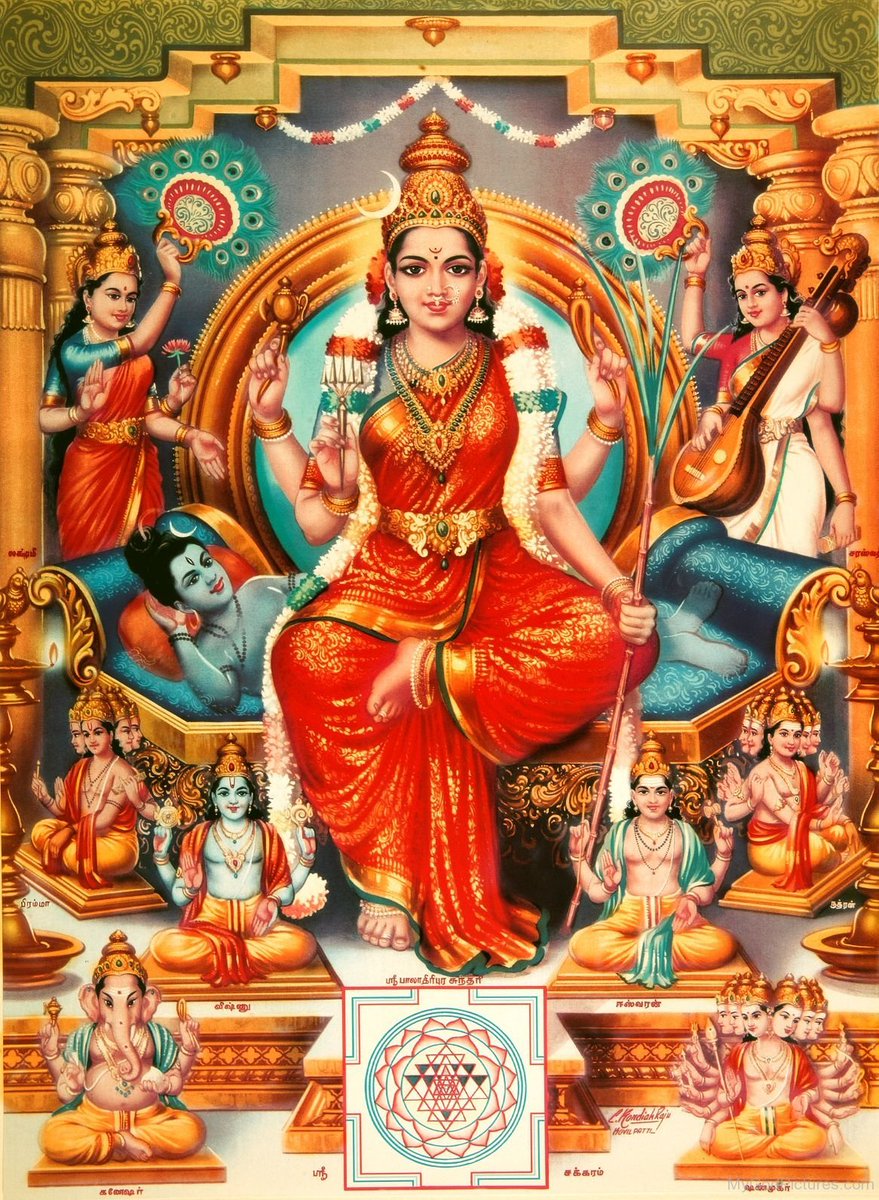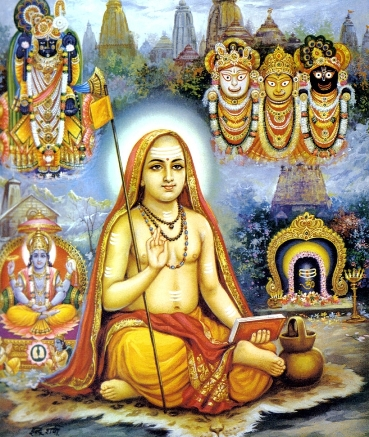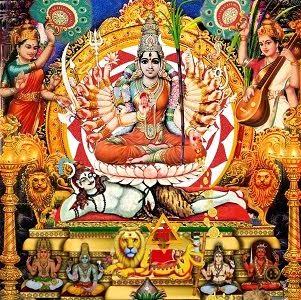
Sri Vidya is a Shakta sect which believes that the goddess Lalita Tripurasundari is supreme.
One of the most important texts of the Sri Vidya sect is the Lalita Sahasranamam, found in the Lalita Mahatmya of the Brahmanda Purana.
One of the most important texts of the Sri Vidya sect is the Lalita Sahasranamam, found in the Lalita Mahatmya of the Brahmanda Purana.

The guru parampara of Sri Vidya consists of broadly 3 sections or "ogha" which literally means "flock" or "groups".
First is the Divyaugha (divine or celestial beings including gods and devatas)
Second is Siddhaugha (extra ordinary beings including rishis, saints)
Third is mAnavaugha (human beings from which human paramparA continues)
Second is Siddhaugha (extra ordinary beings including rishis, saints)
Third is mAnavaugha (human beings from which human paramparA continues)
'shrI' vidyA - is a combination of two words - shrI and vidyA. It is a popular misconception that the word 'shrI' is a title which is added to vidyA like shrI rama shrI krishna etc. Just as brahma vidyA is the knowledge of brahman, shrI vidyA is the knowledge of 'SHRI'
We will discuss about it more in coming days.
@threadreaderapp unroll
• • •
Missing some Tweet in this thread? You can try to
force a refresh













